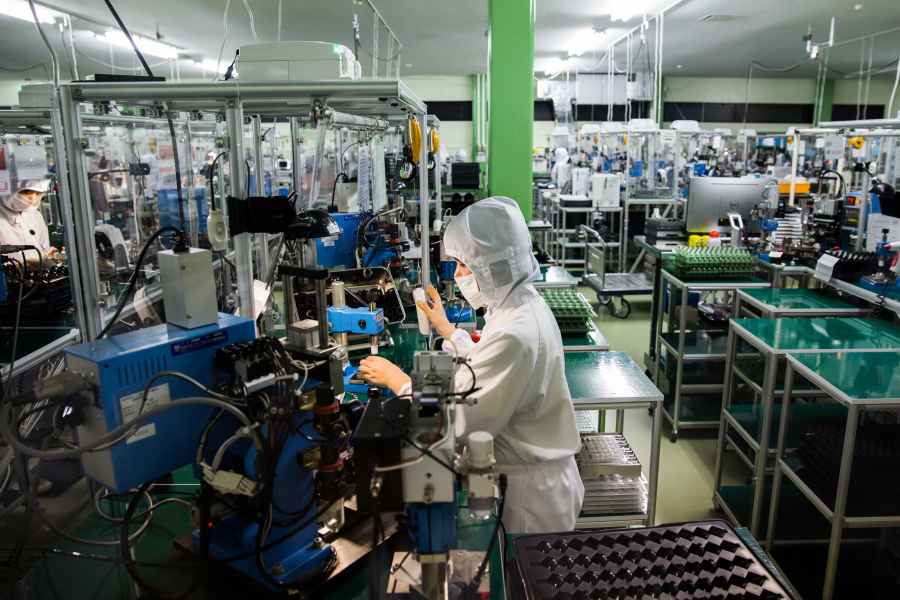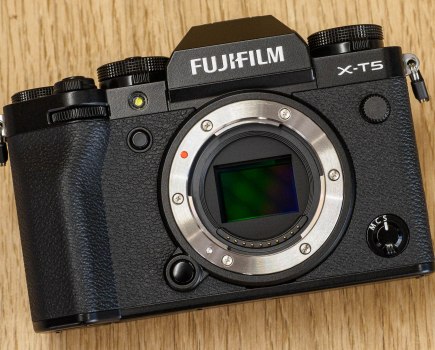Approximately 300km north of Tokyo, in the Aizu region of Fukushima lies a small town named Bandai. To get there, you have to take the bullet train from Tokyo to Koriyama and transfer onto the Ban’Etsusai line towards Bandaimachi station – a long-winded journey and a destination that has taken me three and a half hours to get to.
Upon arrival, a select group of press and I are ushered towards a Sigma-branded taxi bound for the company’s Aizu factory where the manufacturing of cameras, lenses, flashes and other photographic accessories all takes place.
Ten minutes later we arrive at Sigma’s headquarters and at the request of our host, remove our shoes and slip on a pair of white Crocs before entering what feels like a very clinical working environment.
As we head to a conference room to meet Mr Kazuto Yamaki, CEO of Sigma Corporation, more than 50 employees rise to their feet and greet us with a traditional Japanese bow. It’s a reception I’ve never experienced before and I return the Japanese code of etiquette by bowing in return.
A warm welcome from Mr Kazuto Yamaki follows, and a brief presentation about the company and its history reveals some interesting facts and figures that are new to me. Mr Yamaki’s late father founded the business in 1961. He took it over in 2012, after working for the company for 23 years. The factory I’m fortunate to visit today was built in 1974 and is currently the workplace of 1,400 employees, 75% of whom are engineers.
In Mr Yamaki’s words, the philosophy of the business is all about ‘small office, big factory’, and a slide pops up on the screen with other fascinating facts. The production capacity of lenses in the Aizu factory is currently 90,000pcs per month, and 80% of the products made by Sigma in Japan are exported to other countries. The glass that Sigma uses to produce its optics is sourced from Hoya but moulded to Sigma’s specification. Using suppliers in the same country contributes to creating a high-quality product, explains Mr Yamaki.
Spotless production line
Next, I’m passed a white, lint-free protective suit and hat – the precautions every visitor and employee at the factory must take to ensure the production line is kept spotless and free of any contamination that could interfere with the production of lenses.
As I clip a small earpiece to my ear, Mr Yamaki attaches a microphone so he can clearly explain the processes of production above the loud factory machines.

Mr Kazuto Yamaki, CEO of Sigma Imaging, provided a fascinating tour of the production line
A short journey down the road sees us arrive at the metal processing plant. I expected this part of the factory to be big, but nothing could prepare me for the sheer size of it. Row upon row of lathes and machines, the number of employees operating them, the noise – it’s overwhelming on a grand scale. Crates of precision-engineered brass bayonet mounts for the 50mm f/1.4 are stacked upon each other in front of me. Some of the smaller cams and metal parts are so immaculately finished they could be worn as jewellery. Even the tiny screws and washers that hold a lens together, and which are typically outsourced by other lens manufacturers, are produced in-house at Sigma to reduce cost.
Farther along the line, we come to the die-manufacturing section where the metal moulds, which are referred to as dies, are engineered. Shelves upon shelves of these dies are clearly labelled and rest on top of detailed drawings. I pass five members of staff whose job it is to manufacture dies for new products using CAD and water-cutting machines.
Next, it’s onto the injecting-moulding process – the area where small plastic pellets are heated and melted before they’re injected into the metal dies. Lens hoods and internal plastic parts are being produced by the dozen and there’s a clever automated machine that picks up each unit and drops it precisely in a plastic tray. The production line feels as if it’s running like clockwork, and it’s fascinating to watch.
As explained, the quality of plastic components relies on a perfectly engineered die and the maintenance team, which is dedicated to keeping all the machines and dies pristine.
Moving on, we enter the stamping area of the factory, which is a noisy place. This is where parts are stamped out of thin metal using heavy machine presses. We’re guided past the machine that churns out all the aperture blades for Sigma’s lenses.
The human touch
Before entering the branding area of the factory, we’re asked to step inside a sealed room where we’re given an air shower to remove dust particles from our clothing. We then get an insight into how the focal length and distance markings are applied. Each unit is branded one at a time by skilled applicators. It is a single employee’s job to paint the MF/AF switches by hand. Once painted, each part embarks on a 200m journey through various heated ovens to let them dry.
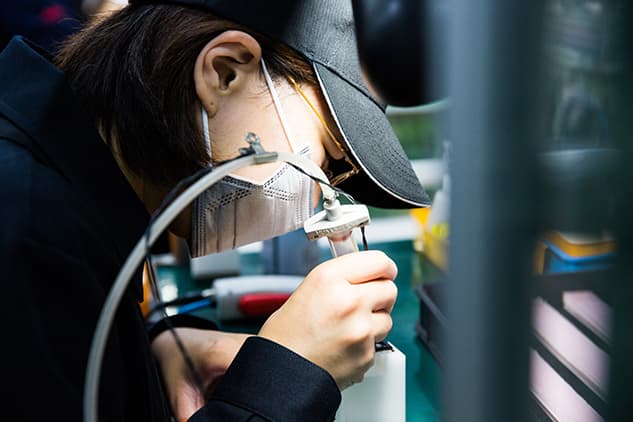
A Sigma employee applies the white paint to the AF/MF switches by hand
As I walk towards where the metal anodising takes place, I pass an area of quality control where staff painstakingly inspect the painted aperture blades and decipher the usable from the unusable. The anodising area of the factory is another interesting place, and it’s here that metal parts go through the chrome plating process to give them their silver colour and prevent rusting and corrosion. Interestingly, up to 40% of the water used in the anodising area is recycled and reused.
The next stage on the tour passes through the glass moulding area, where large and small glass aspherical lens elements are precision made. After the glass elements are ground and receive a first polish, technicians examine each element individually for imperfections and scratches, before approving them. The glass elements receive a finer polish before they are coated and the edge is finished. Elements are stacked up everywhere by the tray load, each one sitting in its custom-made holder as it works its way to the next team.
When asked which is the most expensive machine in the factory, Mr Yamaki replies, ‘The lens-coating machine costs over $1 million.’
As a machine to look at, it’s nothing special, but it plays the important role of applying special multilayer coatings to reduce flare and ghosting. As the glass elements progress slowly towards the sub-assembly line, they’re sealed into plastic parts. Mr Yamaki explains that by warming plastic and squeezing the glass into it, it’s easier to ensure the optical axis of each element is perfectly aligned.
Once a lens is constructed, it enters the focus accuracy area. Anodised air is used to remove all the static and any dust before it enters the facility and every lens receives critical lab testing to ensure it meets the high standard engineers are happy with. There are lens test charts aplenty and engineers studying MTF data on screens with a critical eye for detail and sharpness. The dedicated area for testing and approving Sigma’s 150-600mm f/5-6.3 lens is absolutely huge, and although it seems like crates of lenses are piling up in the testing centre, there’s a Zen-like sense of calm as the engineers go about their work.
Boxing and packaging
As we make our way to the packing and shipping department, Mr Yamaki points out the large ovens that are used to test the working temperatures of new products. The ovens are on and in use, but sadly I’m not permitted to look inside – I can only presume a new product is being heat tested.
The boxing up and packaging of products marks the final stage at the Aizu factory before lenses are shipped to their final destination. It’s a vital part of the production line and a team of four skilled workers are responsible for building the flat-pack Sigma boxes.
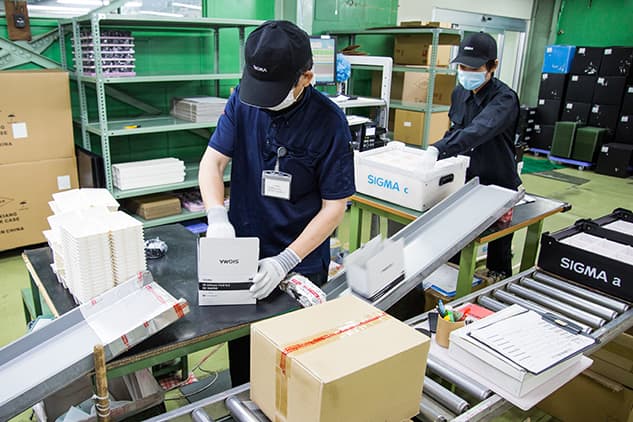
Sigma lenses get packaged up in the boxing and despatch area of the production facility
They place each lens in its custom-made packaging and ensure the serial numbers match the documentation and stickers applied to each box. It seems a logistical nightmare that’s all under control. White Sigma boxes containing the finished product then fill much larger boxes, which pass along a series of airport-style baggage rollers to the shipping department for export.
A CEO who cares
As I follow Mr Yamaki around the factory, I realise there’s nothing about the production process at Aizu he doesn’t know. It’s refreshing to see the CEO of a global business not only so passionate about a company, but also so knowledgeable in every single aspect of how the product is made. The respect and loyalty he has for the employees of the business shines through. He acknowledges every member of staff he passes and pauses for a quick chat with old colleagues who have known him since childhood.
Crafted to perfection
After my extensive factory tour and talk with Mr Yamaki on our way back to the conference room, I try to comprehend all the steps I’ve witnessed that go into creating a Sigma lens. Watching the lengthy process involved in engineering a lens from bare metal and plastic to the finished product is something I feel very privileged to have experienced. Having purchased a Sigma 50mm f/1.4 DG HSM A just over a year ago, I now have a clearer understanding of what painstaking work and precise engineering went in to making it.
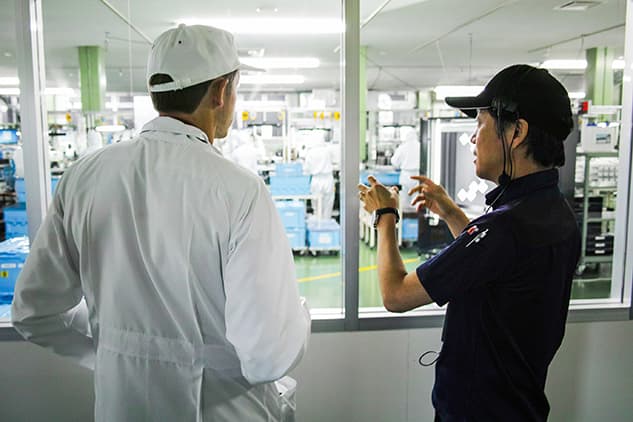
Mr Kazuto Yamaki shows Michael Topham one of the extensive lens testing areas for telephoto zooms
Companies that manufacture lenses for DSLRs and mirrorless cameras don’t simply produce lenses, they craft them with exceptional skill and expertise, which in the case of Sigma has been going on for many decades. At the beginning of my visit Mr Yamaki told me that one of the reasons for keeping production in Japan as opposed to moving it to China, Thailand or Vietnam was to protect the Aizu employees, whom he describes as hard working, diligent, meticulous and persistent.
On my tour I get the sense they’re like this all the time, every day of the working week and not just on days the factory receives a visit from the world’s press.
In the same way we entered the building, every Sigma employee was upstanding and gave us a bow when the time came to leave. Only one thing remained: I needed to swap my pristine white Crocs for my more formal shoes, before returning to Tokyo.
Sigma Interview
During our visit to the Sigma factory in Aizu, Michael Topham conducted an interview with Mr Kazuto Yamaki and asked questions about lens development, the camera side of the business and the future of the company. To read the interview in full, head to transport.kelsey.host/amateurphotographer/sigmainterview

